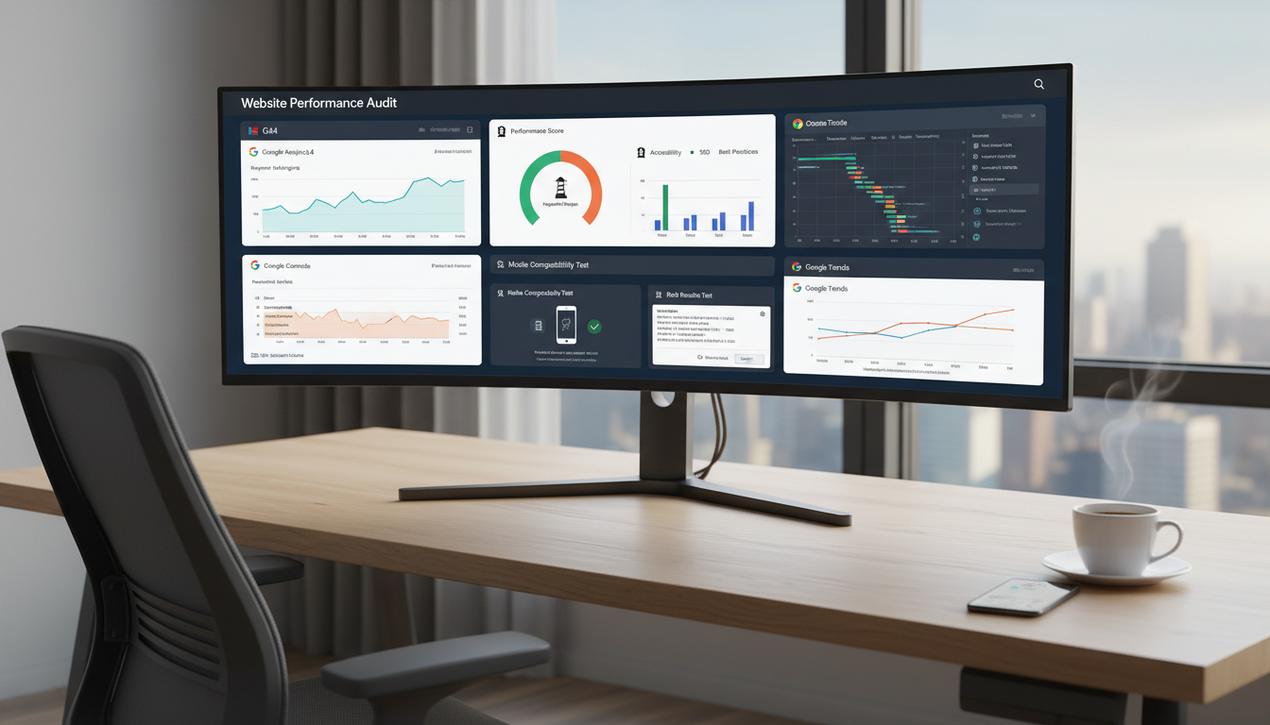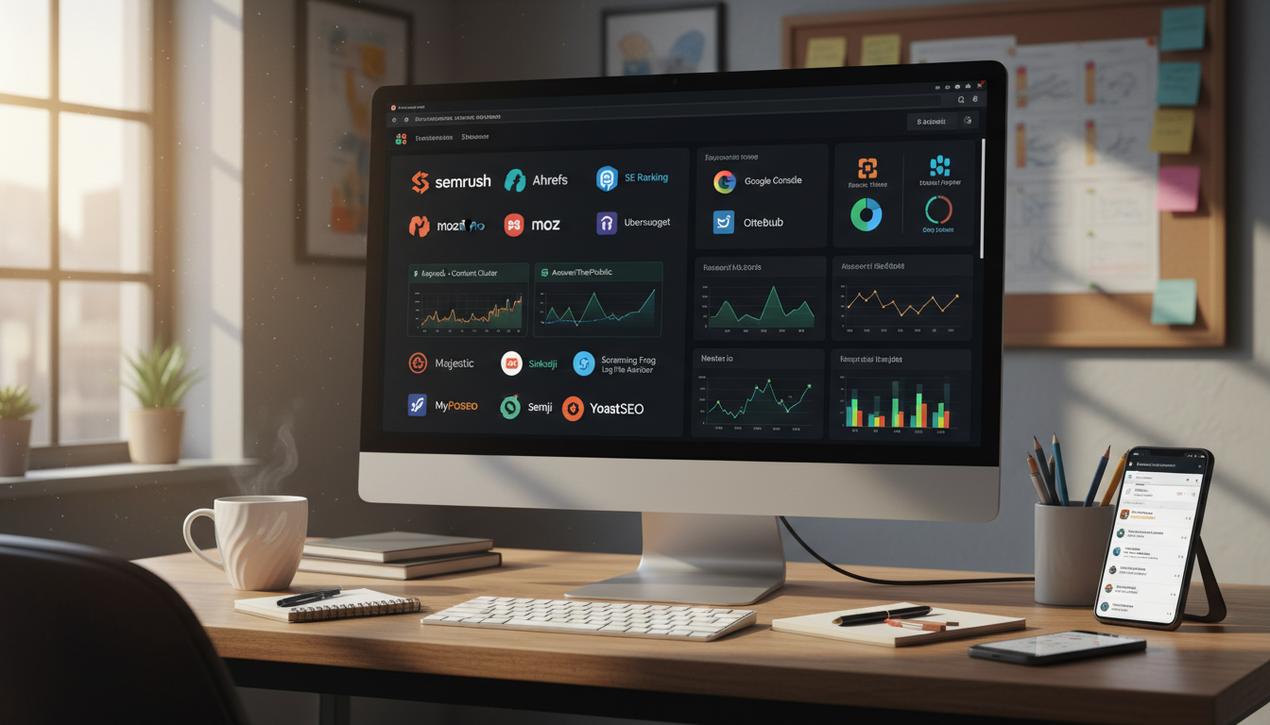9 Google Tools to Audit Your Website’s Performance in 2025


In the digital age, website performance is no longer an option—it is an absolute necessity for survival and growth. A slow or unintuitive site is immediately penalized by both users and search engines. The data is clear: a one-second delay in page load time can lead to a 7% reduction in conversions and an 11% decrease in page views. With over 60% of global web traffic now originating from mobile devices, optimizing for the mobile experience has become the primary battleground. As the undisputed leader in search, Google understands these stakes perfectly. The tech giant has developed a comprehensive suite of free tools designed to help site owners, developers, and marketers diagnose and fix their platforms’ weaknesses. Mastering these instruments isn’t just a best practice; it’s an essential strategic move to guarantee visibility, enhance user experience, and ultimately achieve business goals. This complete guide provides an in-depth look at 9 of these essential Google tools to transform your site into a performance powerhouse.
Why a Regular Website Audit Is Crucial
Testing your website shouldn’t be a one-time task performed during a redesign. It is an ongoing process that addresses several strategic imperatives. The digital environment is in constant flux: Google’s algorithms become more complex, web standards evolve, and user expectations grow more demanding. A regular audit is key to staying competitive.
Impact on SEO (Search Engine Optimization)
Technical performance is a cornerstone of SEO. Since the introduction of the Core Web Vitals, Google explicitly evaluates the quality of user experience to rank pages. Metrics like LCP (Largest Contentful Paint) for loading, CLS (Cumulative Layout Shift) for visual stability, and more recently INP (Interaction to Next Paint) for responsiveness, are critical. A site that neglects these aspects will see its rankings fall behind faster, smoother competitors.
Enhancing User Experience (UX)
A visitor frustrated by a slow site or navigation errors is a lost potential customer. The first impression is decisive. A high-performing website inspires trust, encourages exploration, and simplifies the conversion funnel. Analyzing behavioral data with Google’s tools helps identify friction points and optimize user journeys to maximize engagement and satisfaction.
Optimizing Conversion Rates
Every millisecond saved on loading time can have a direct impact on your revenue. Studies consistently show that improving site speed by just 0.1 seconds can boost conversion rates by over 8%. Implementing these fixes effectively often requires successful project management to coordinate technical tasks and measure results.
Foundational Tools for Monitoring and Indexing
Before even thinking about speed, you need to understand your audience and ensure that Google can properly crawl and index your site. Two tools are absolutely essential for this mission.
1. Google Analytics 4: Your Audience Compass
Google Analytics 4 (GA4) is much more than a simple visit counter. It is a powerful analytics platform that offers a 360-degree view of user behavior. Unlike its predecessor, GA4 is event-based, allowing you to track much finer interactions across your website and mobile app.
- User Journey Analysis: Follow the paths visitors take, identify the pages that cause them to leave, and pinpoint those that convert.
- Audience Insights: Get demographic, geographic, and technological data about your visitors to refine your content strategy.
- Conversion Measurement: Set up custom goals (downloads, sign-ups, sales) to accurately measure the return on investment of your marketing efforts.
2. Google Search Console: The Direct Line to Google
The Search Console is the tool that allows you to communicate directly with Google. It provides crucial information about how the search engine sees your site. It is the health dashboard for your website’s SEO.
- Search Performance: See which queries are driving traffic, which pages are most popular, and what your average position is in search results.
- Indexing: Submit your sitemap, request indexing for new pages, and identify any pages Google is unable to crawl.
- Alerts and Errors: Be notified of security issues, and learn how to fix a 403 Forbidden error or other crawl issues that could harm your visibility.
Analyzing and Optimizing Technical Performance
Once monitoring is in place, it’s time to dive into your site’s mechanics. Speed and responsiveness are major ranking factors.
3. PageSpeed Insights: Your Performance Report Card
This easy-to-use online tool gives you a performance score from 0 to 100 for both mobile and desktop. PageSpeed Insights analyzes a URL and provides a diagnosis based on both real-world user data (Field Data) and lab tests. It highlights Core Web Vitals scores and provides a prioritized list of recommendations to improve speed, such as optimizing images, reducing JavaScript, or leveraging browser caching.
4. Lighthouse: The Comprehensive Audit in Chrome
Lighthouse is an open-source, automated auditing tool accessible directly from Google Chrome’s developer tools. It goes a step further than PageSpeed Insights by conducting a comprehensive audit across five key areas:
- Performance: Detailed measurement of loading speed and interactivity.
- Accessibility: Checks if your site is usable by people with disabilities.
- Best Practices: Ensures you are following modern web development standards.
- SEO: Analyzes basic technical SEO elements like title tags and meta descriptions.
- Progressive Web App (PWA): Validates the criteria if you are building a PWA.
5. Chrome DevTools: The Developer’s Toolbox
Built into every Chrome browser, DevTools is an extremely powerful suite of debugging and profiling tools. The “Performance” panel allows you to record and analyze every step of a page’s loading process in minute detail, helping you identify exactly which script or resource is slowing down the display. It is the ultimate tool for advanced technical optimizations.
Validating Mobile-Friendliness and Rich Results
A fast site isn’t enough. It must be perfectly functional on mobile and structured to appear attractively in search results.
6. Mobile-Friendly Test
With mobile-first indexing, Google crawls and ranks your site based primarily on its mobile version. This simple tool checks if a page is “mobile-friendly.” It tests whether elements are readable without zooming, if links are spaced far enough apart to be easily tapped, and if the content fits the screen.
7. Rich Results Test
Rich Results are visually enhanced search results that can display star ratings, product prices, recipe times, and more. They significantly increase click-through rates. This tool validates that your structured data (Schema.org) is implemented correctly so your pages can qualify for these special displays.
8. Google Cache
To understand how Google’s crawler actually “sees” your page, you can view its cached version. This shows you the raw text version of your page, stripped of complex CSS and JavaScript. It’s an excellent way to verify that your main content is accessible and that your internal linking is properly structured for crawlers.
9. Google Trends
While not a technical testing tool, Google Trends is fundamental for testing the relevance of your content. It allows you to analyze the popularity of your keywords over time, compare terms, and discover emerging trends. Using this tool helps ensure you are creating content that meets a real and growing user demand.
A website’s performance is the result of a multitude of technical, structural, and editorial factors. Google’s free ecosystem of tools offers a complete suite to diagnose, analyze, and improve every aspect of your online presence. By combining the strategic insights from Google Analytics, the health alerts from Search Console, and the technical diagnostics from Lighthouse and PageSpeed Insights, you have everything you need to make informed decisions. Adopting a routine of continuous auditing and optimization is not an extra workload; it is a direct investment in the growth of your visibility, the satisfaction of your users, and the success of your business.




